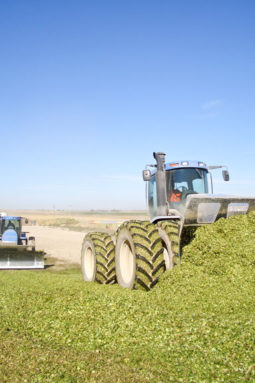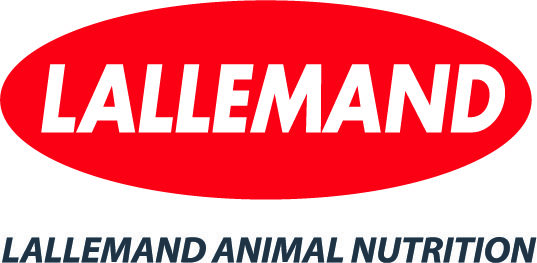Editor’s note: This article may be a good starting point for a discussion with a custom harvester about how to achieve the highest quality feed possible. Your nutritionist could be the most valuable member of your corn silage chopping crew – even though he or she probably will never drive a chopper or packing tractor. Knowledge of your ration and cows can allow your nutritionist to make suggestions for improvement based on how last year’s silage crop fed and how your herd performed.
Decisions made at chopping affect silage quality in the bunker, nutrition in the feed alley and milk in the tank. Poor-quality silage can lead to lower nutritional value, mold, yeast and toxin presence, reduced feed intake and rumen upset.
Waiting to involve your nutritionist until you are ready to feed the silage may result in extensive ration adjustments or it may be too late to fix certain issues. Reviewing your corn silage goals with your nutritionist prior to chopping season could save you headaches at feeding time and result in a higher-performing ration.
Start with a harvesting plan
Whether silage production is handled by the farm manager or by a custom chopper, it is important to have a plan in place. Discuss each of these silage production steps with your nutritionist:
- Set goals for moisture level at harvest
- Adjust chop length to aid rumination
- Determine desired level of kernel processing
- Plan to fill and pack quickly to prevent spoilage
- Cover bunkers and piles to minimize loss
Set goals for moisture level at harvest
Harvesting silage at the appropriate moisture content is one of the keys to success when producing quality corn silage. Silage that is harvested too wet can lose soluble nitrogen and carbohydrates to leakage.
The risk of harvesting a bit on the wet side is that starch may not have fully accumulated but silage will pack well and have optimum digestibility.
On the other hand, silage that is chopped too dry undergoes a less vigorous fermentation and doesn’t pack well. These two conditions can lead to development of undesirable yeasts and molds.
Silage harvested in the low 60s can have poor starch digestibility even if processed well. It also can be more difficult to achieve an optimum pack at drier harvest and poor stability may result.
Discuss past silage fermentation patterns with your nutritionist and determine if you need to adjust your moisture content at harvest.
As a general rule, conventional silage that will be stored in an upright silo should be harvested at 62 percent to 65 percent moisture; in a bunker or pit, 65 percent to 68 percent moisture and in a bag, 62 percent to 68 percent moisture. Brown midrib (BMR) corn silage should be harvested 1 percent to 2 percent higher moisture than conventional.
Remember that whole-plant moisture may be lower when you finish chopping than when you start. Under normal conditions, expect moisture content to drop about .5 percent per day.
However, moisture can drop more rapidly under high heat and wind conditions – as much as 1 to 2 percent per day or more. Use a precise method to test moisture levels prior to harvest such as a Koster tester or a microwave.
Adjust chop length to optimize rumination
Forage particle length affects rumen function and dry matter intake (DMI), which is fundamental to milk production. Maximum DMI can be reached only through proper rumen fermentation.
Rumen microbes are responsible for fermentation and are extremely sensitive to changes in pH. Rumination or “cud-chewing” produces saliva, which helps regulate rumen pH. If the forage particles are too fine, rumination is decreased. This reduces digestibility and can cause digestive upsets.
If corn silage is harvested at optimum moisture, use a cut length of ½-inch to ¾-inch. Drier corn silage may need to be cut shorter to improve packing. BMR corn silage requires a longer chop length to ensure adequate fiber content in this highly digestible forage.
Processed BMR corn silage should have a minimum one-inch theoretical length of cut. Discuss proper chop length with your nutritionist for advice on proper particle size for your herd.
Determine desired level of kernel processing
Processed silage offers the potential for better nutrient utilization and can improve milk production. This is because processing exposes the kernel for rumen bacteria to digest.
Work with your nutritionist to determine the desired level of kernel processing. For most operations, the goal should be to have more than 95 percent of the kernels well cracked.
Dr. Limin Kung, Jr. dairy nutrition professor at the University of Delaware , recommends that 70 percent of the kernels be smaller than one-quarter of the full kernel size; cobs should be broken into more than eight pieces.
The drier the corn silage, the more imperative it is to have the rollers turned down tight. Kernel processor roller clearance of one mm will do the best job on the kernels, but will also decrease overall particle size of the stover. Particle size is very important, especially as higher amounts of corn silage are fed.
With any type of processing, it is important for the chopping crew to monitor particle size and kernel processing throughout the harvest window because moisture, ground speed, field and hybrid variation can change frequently.
Plan to fill and pack quickly to prevent spoilag
Air is the worst enemy of silage. At the front end of storage, air delays fermentation and uses nutrients. During storage and feedout, air stimulates growth of yeast.
Properly packing the bunker soon after harvesting provides the anaerobic environment needed for effective fermentation. Densely packed silage will have less dry matter loss and higher feeding quality than less densely packed silage.
Again, your nutritionist can analyze the fermentation pattern of last year’s crop to determine if you need to pay closer attention to your packing process.
For bunkers and piles, forage delivery rate from the field to storage needs to be matched against optimum packing time and the number of tractors. As a rule of thumb, you will need approximately 800 pounds of pack weight for every ton of silage delivered per hour.
For example, if silage is being delivered at the rate of 100 tons per hour, your packing tractor or tractors need to deliver 80,000 pounds of weight to properly pack the silage. Weights can be added to the front of the tractor or to the three-point hitch.
Set a density goal of 16 pounds DM per cubic foot of corn silage in a bunker or pile. To accomplish this, push and pack thin layers evenly over the entire pile.
Packing time should be one to three minutes per ton of forage. It may take more than one packing tractor to keep up with silage delivery. Plan ahead to ensure multiple tractors and drivers are available if needed.
Bags protect silage from air exposure only after they are sealed, so it is critical to fill and seal bags as quickly as possible. Have all equipment to harvest, transport and fill the bag ready so the process can be completed rapidly. If using bags, 13 lbs DM per cubic foot of corn silage is a good target density.
Silage in upright silos is packed by the weight of the material above. This means that forage near the top of the silo is less dense and more vulnerable to oxygen penetration. Silos that are filled rapidly limit air exposure, so quick filling should be a top priority.
Cover bunkers and piles to minimize losses
The final step in silage production is to cover the corn silage as quickly as possible. Plan ahead to ensure you have adequate supplies of plastic, tires or other covering materials. White plastic is more effective than black and two layers are better than a single layer.
Oxygen barrier plastics are expensive but also the most effective at preserving silage quality. Discuss the pros and cons of different materials with your nutritionist and ask what he or she has observed at other operations.
When covering a bunker, pay special attention to edges and seams, as gaps in these areas can easily let air in. Consider placing sandbags at the edge of the bunker to keep the sides airtight. Bags and plastic coverings are effective only if they are intact, so monitor frequently and patch holes as needed.
Just because the silage is harvested, packed and covered doesn’t mean it’s time to stop managing the forage. The face of the bunker leaves the silage vulnerable to spoilage during feedout.
To prevent silage from spoiling when exposed to air, keep the bunker face clean and minimize damage. Knock down only enough silage to feed immediately. Remove more silage in hot weather and if the silage is dry or poorly packed. Keep the plastic tight up to the edge of the bunker face.
Managing DM loss in your silage pile is critical. Consider the feed value you could gain if you manage your pile properly and hold DM losses to 10 or 12 percent – compared with losses of 20 percent or more if management steps are skipped. With corn prices above $6 per bushel, it is more critical than ever to ensure quality silage is harvested, stored and fed.
Consult with your nutritionist to set silage quality goals for this year’s harvest so you can make the most of your ration expenditure.







